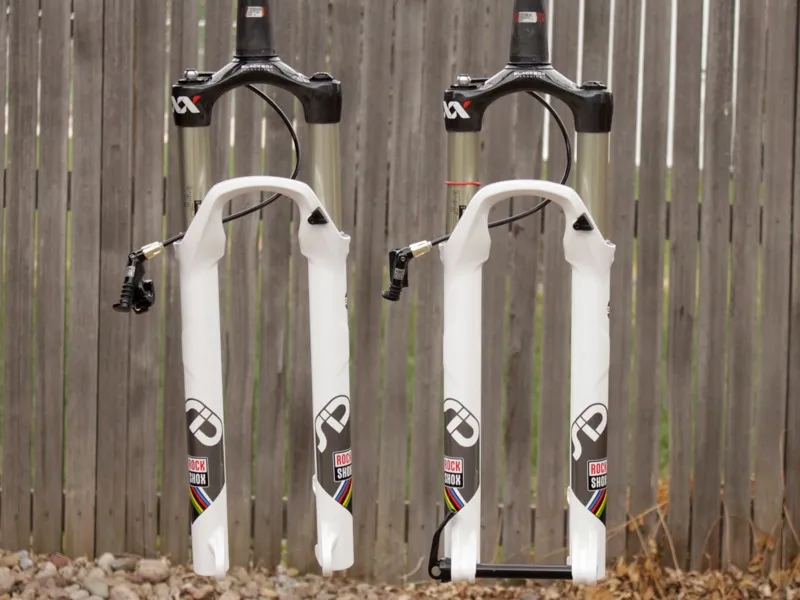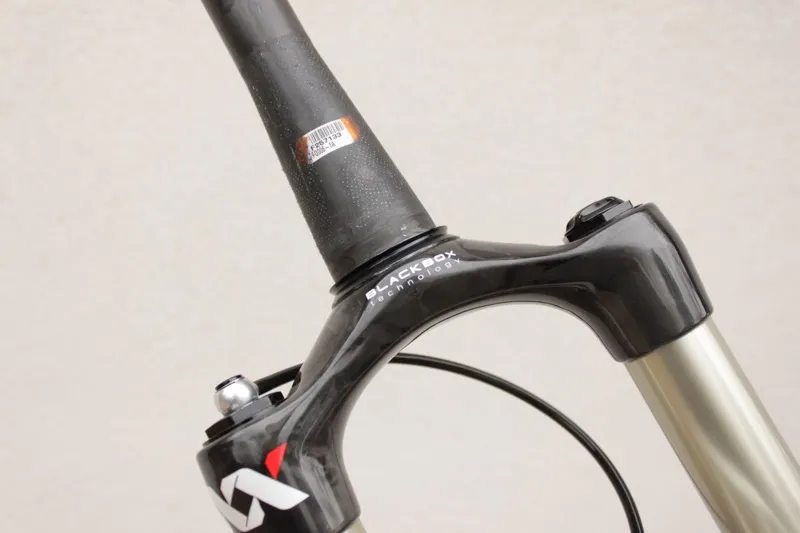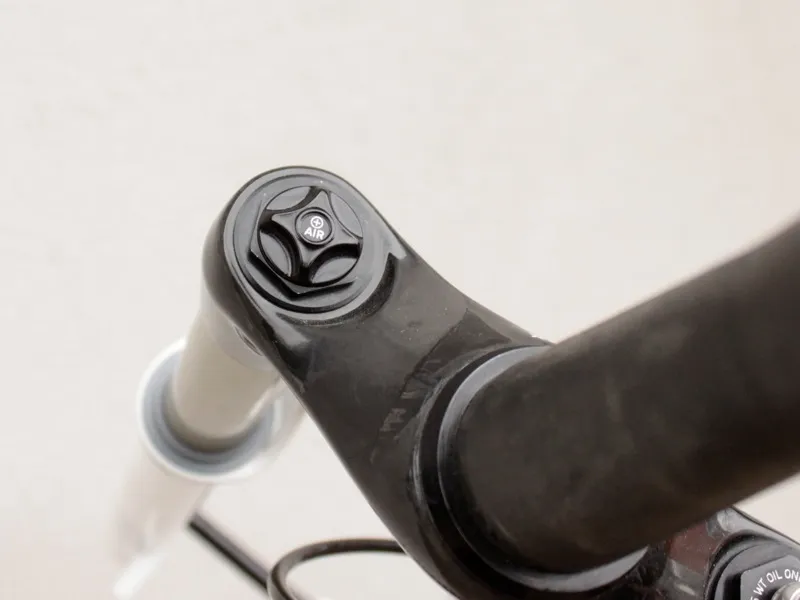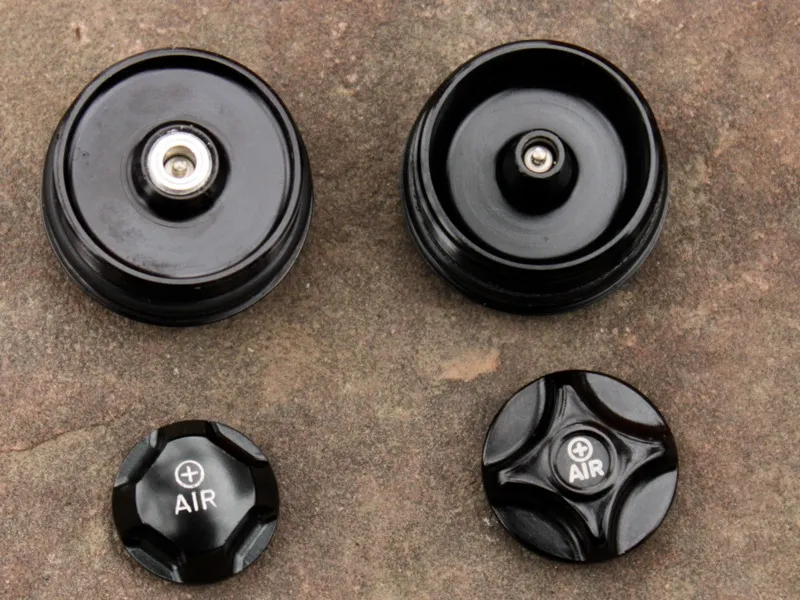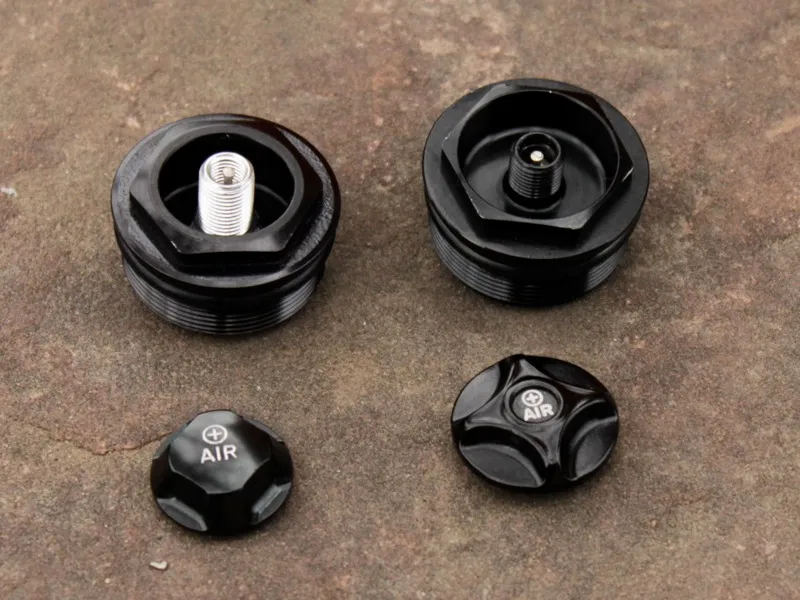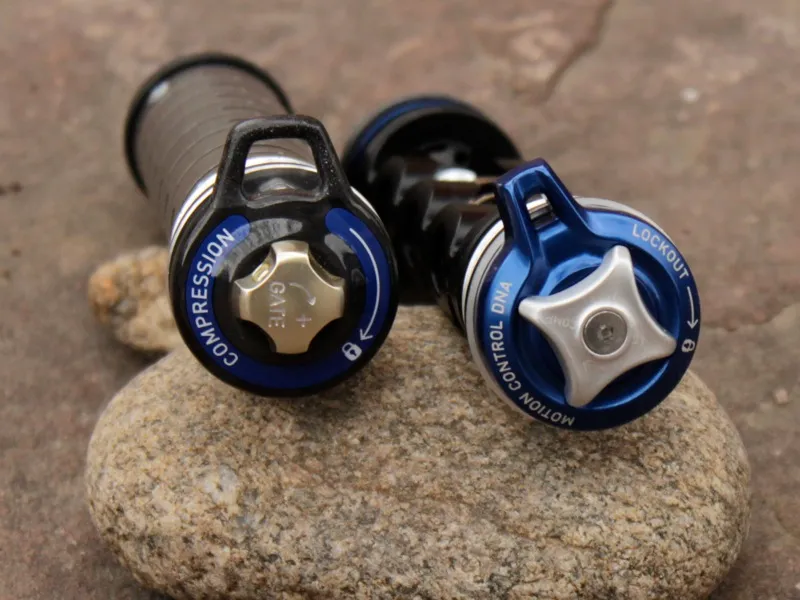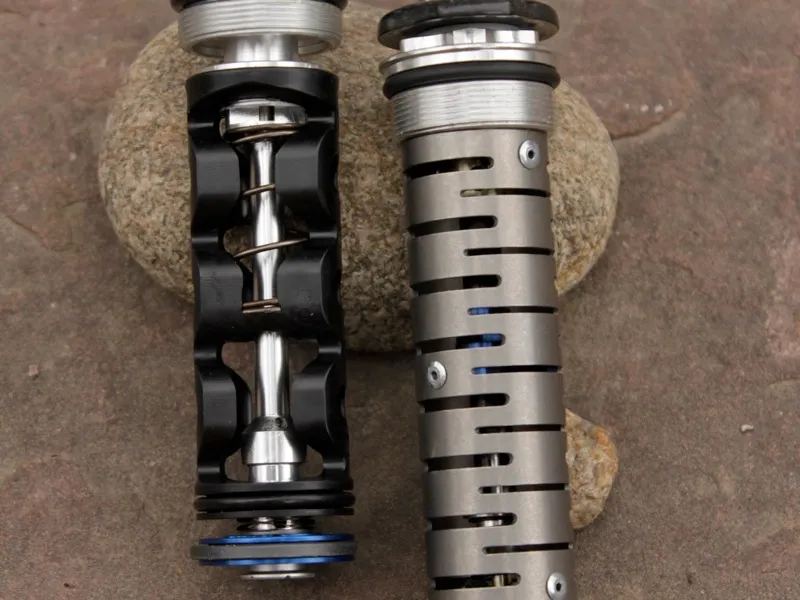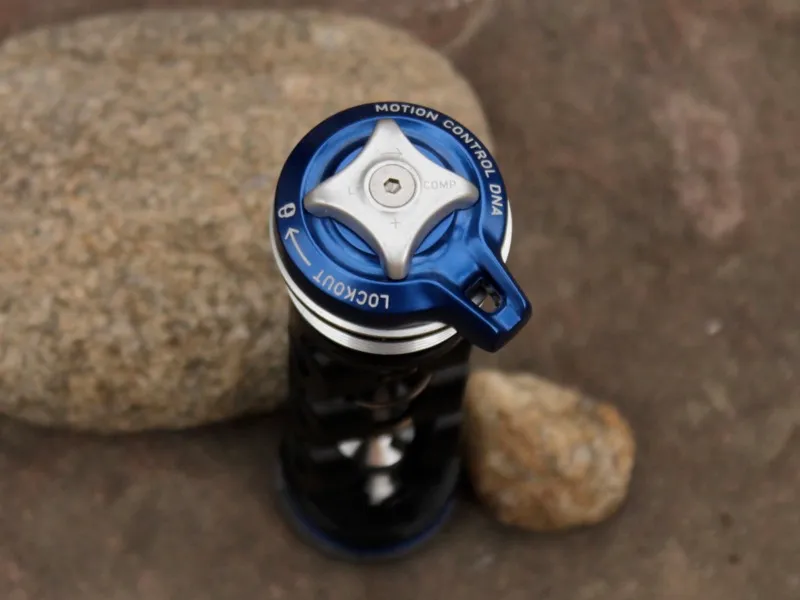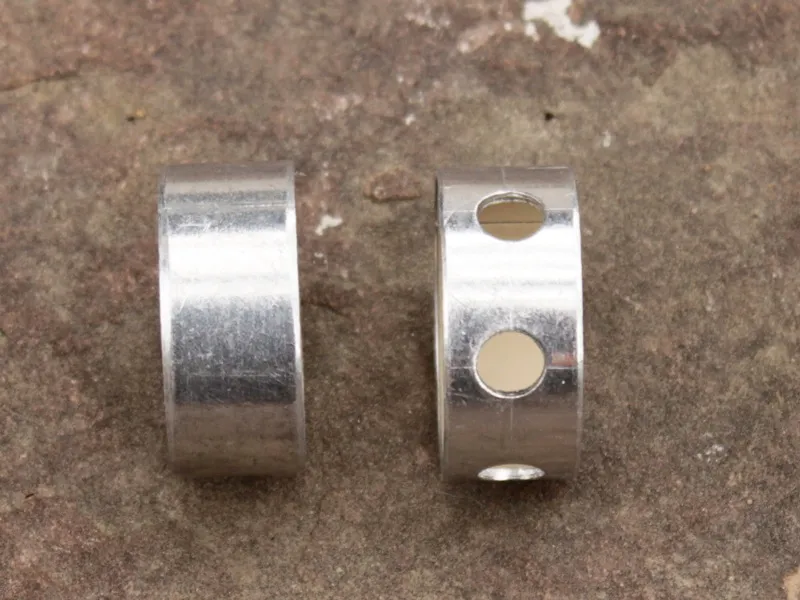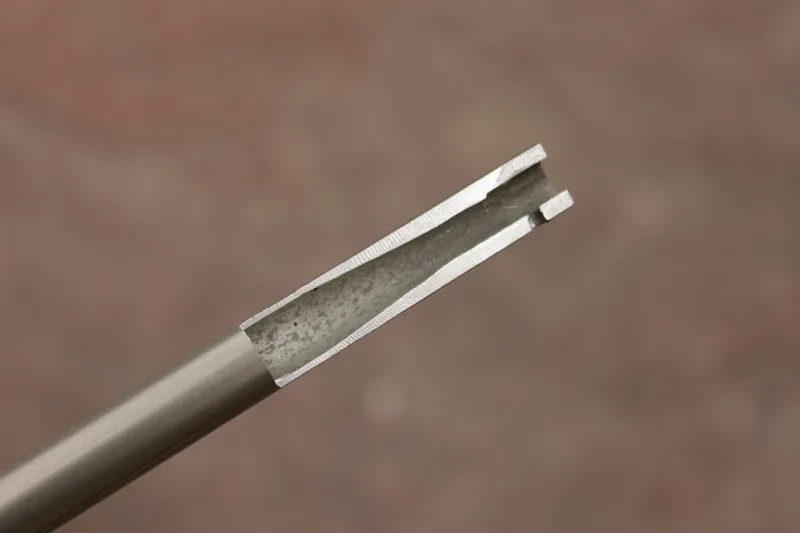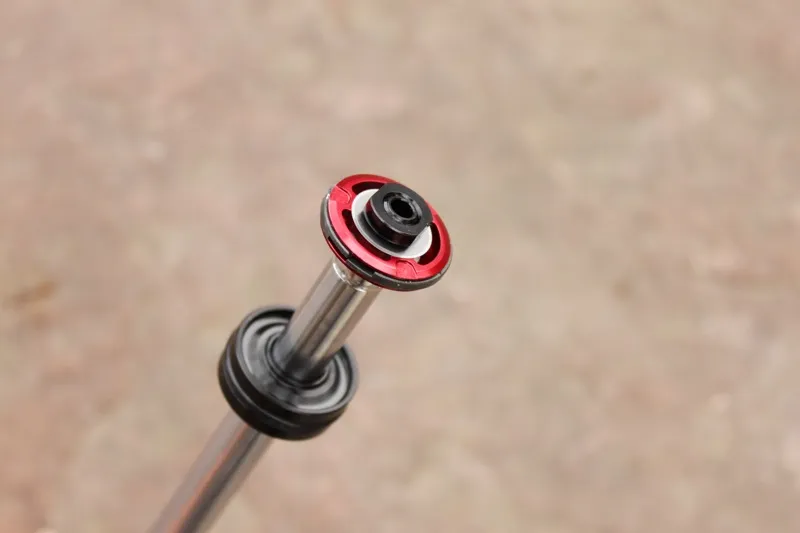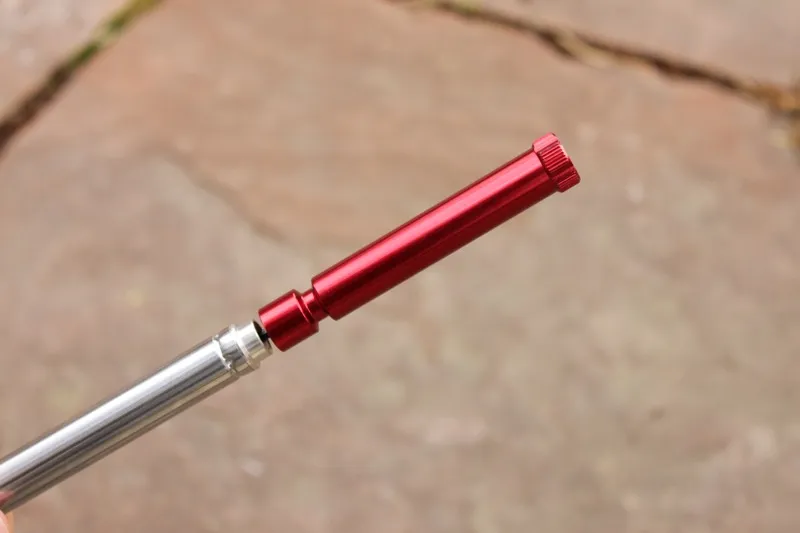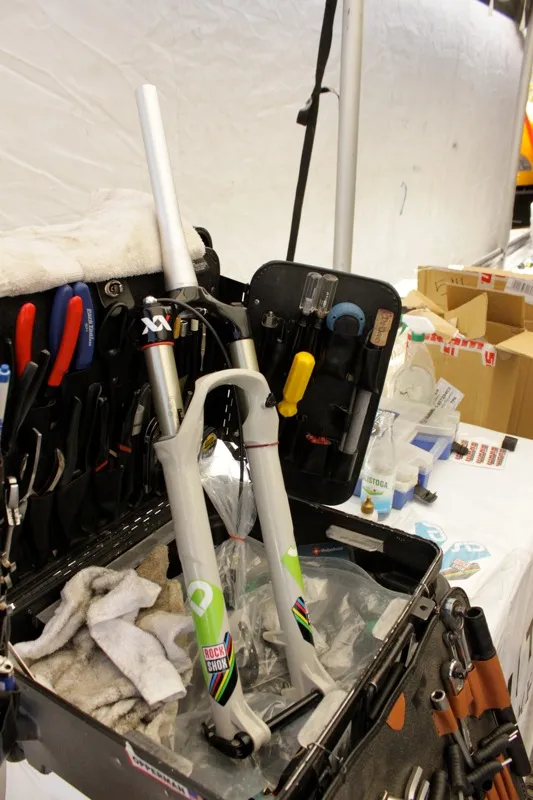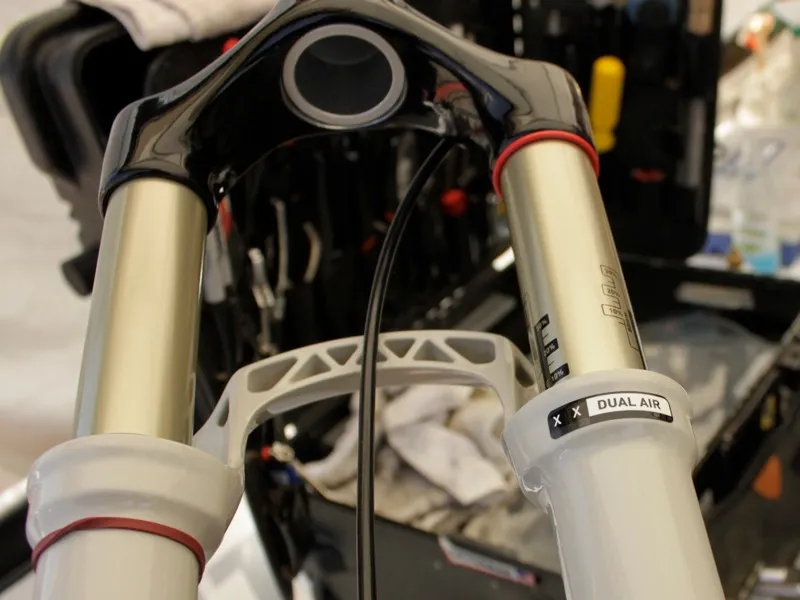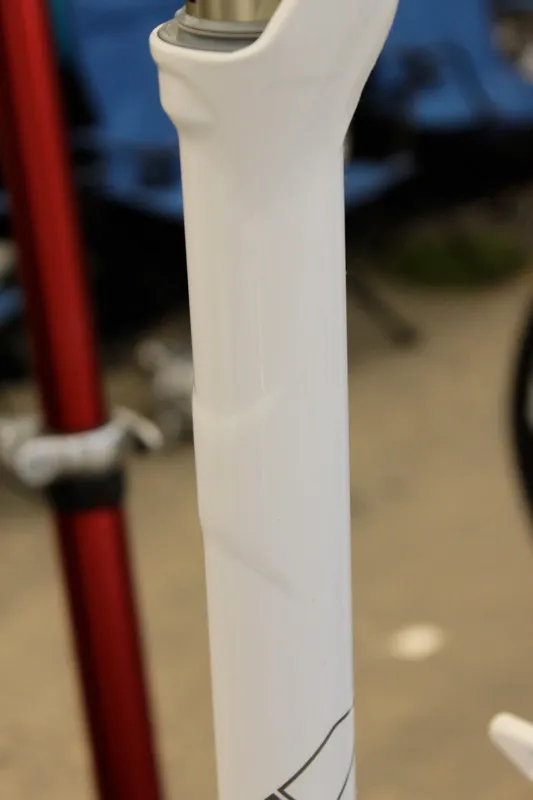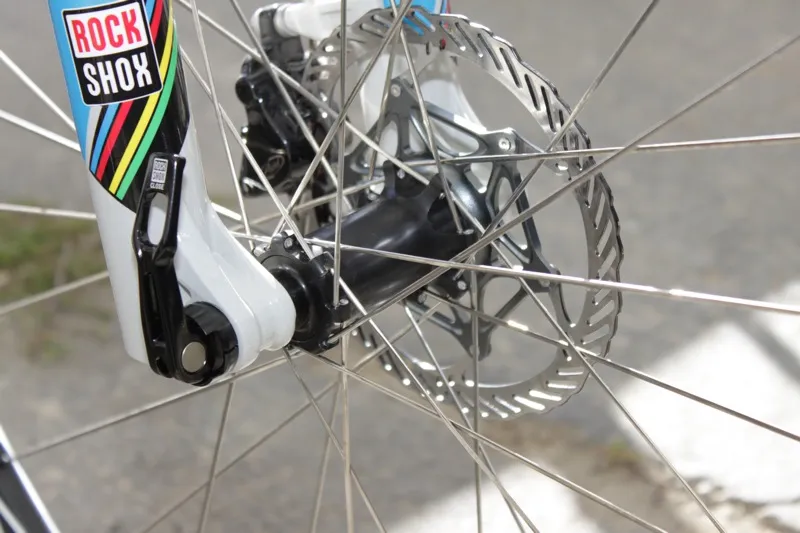It turns out that the fork we called out earlier in the year as the new SID 29 was actually an example of what will become the 2012 RockShox Reba. There is a SID 29 too though, and there's more to it than just a lengthened chassis.
At first glance, the 2012 SID 29 and Reba 29 look the same. That's because both forks share the same chassis, in the form of lower legs, upper tubes and crown. The main external differences are the decals and the crown-steerer, which is carbon fibre on the SID World Cup and alloy elsewhere.
“Instead of having two dedicated separate chassis, we decided to design one single chassis and allow the internals and some of the details to differentiate the two product lines,” Jeremiah Boobar, RockShox’s cross-country and trail product manager, told BikeRadar. It's these internal differences that ensure the SID (it stands for Superlight Integrated Design) remains the pinnacle of RockShox’s cross-country line.
“The [product development] team was wrapping up the new 120mm SID chassis and the next stage was taking the slightly longer axle-to-crown SID and making a 29er version,” said Boobar. “It’s something that we’d always known we wanted to get to, but we had to get there incrementally to be able to make it part of the true SID name. We didn’t want to re-label the Reba, we wanted to really make it of Superlight Integrated Design.”
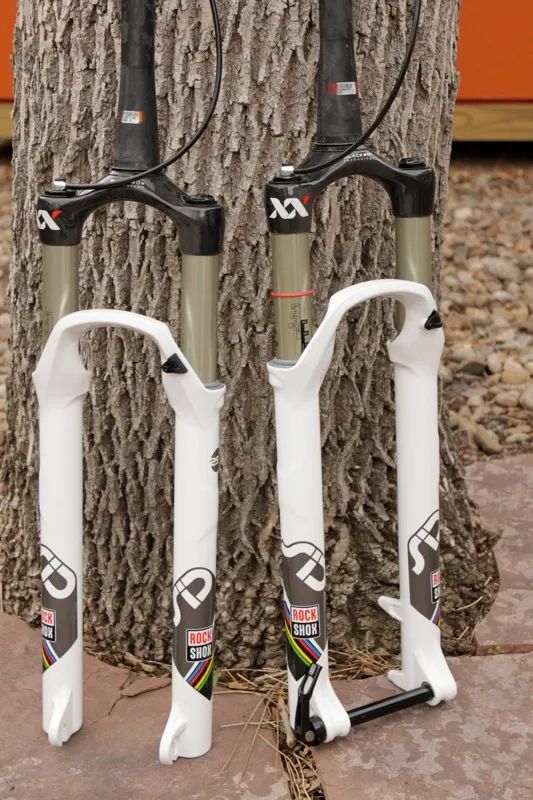
The 9mm open dropout fork weighs just 3.27lbs, while the more contemporary 15mm through model weighs a competitive 3.43lbs with the axle
RockShox's engineers appear to have done an admirable job — the new 29in SID World Cup weighs less than the original 26in World Cup chassis with 32mm stanchions which was launched in 2009, despite its extra length. Actual weights for the first of the forks we’ve touched here at BikeRadar are 1,559g (3.43lbs, with axle) for the 15mm axle, and 1,487g (3.27lbs) for the 9mm quick-release, both forks weighed with XX dampers and remote levers.
What makes it a SID?
Just about everything on the new fork — from the air cap to the new Motion Control DNA compression damper and lightweight buffed aluminum air shaft – has been designed with the goal of eking every ounce of performance out of it.
The one-piece internally butted airshaft is hard anodized and polished so that its surface mirrors the smoothness of the Reba’s chromed steel alternative. “It’s a pretty techy piece,” said Boobar. “It pulls out some decent weight [10g weighed by BikeRadar]; just like everything with SID, we’re trying to look at every single piece of this fork to pull whatever weight we can out of it.”
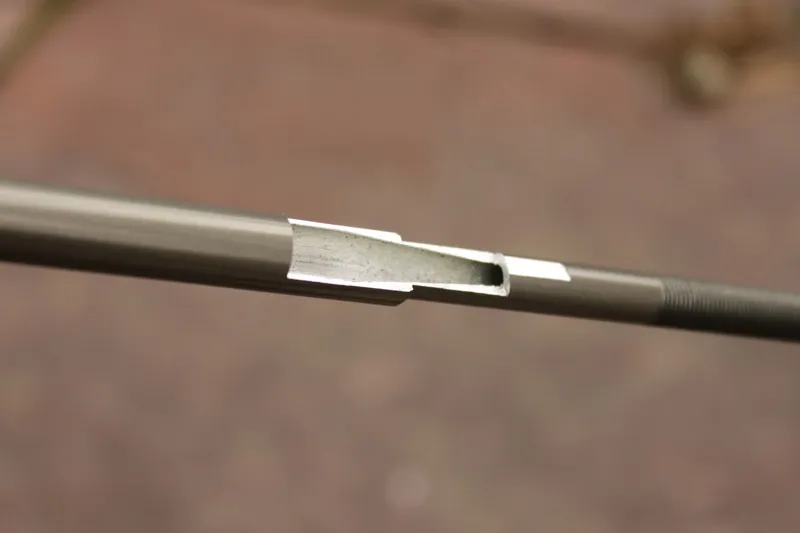
The butted alloy airshaft is a complex piece that offers considerable weight savings to SID
Combine the shaft with a new one-piece top air cap, into which the Schrader air valve threads directly, and RockShox say they've created a lighter, more robust air spring with less chance of leakage. The new cap also adds volume to the air chamber, since some have been critical of SID's progressive spring characteristic in the past. " The new top cap increases residual air volume and will make the SID air spring slightly less progressive," said Boobar. "The new top cap design gave us an opportunity to easily increase the air volume."
On the damping side, SID combines RockShox's dual flow rebound — which sports a refined design and 14 new detents — with a new Motion Control damper, which is named for the double-helix look the spring tube offers. “We wanted to take all the great stuff in Motion Control and take it a step further to reduce the weight and improve the interface for the rider, and what we’ve come up with is called Motion Control DNA,” said Boobar.
The double-helix spring tube is said to offer performance similar to the BlackBox Motion Control damper’s titanium spring tube, while being lighter and less expensive to manufacture. It'll be used in all 2012 SID dampers, including the top two: XX, and an all-new damper that will replace the BlackBox model, called RCT3. “It’s the crown jewel of the DNA dampers,” said Boobar. “It'll replace the BlackBox Motion Control as our highest-end ‘crown adjust’ damper."
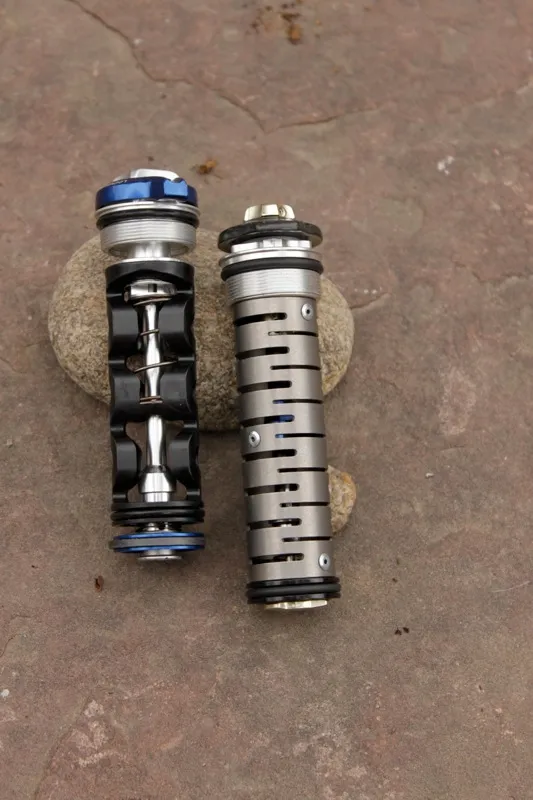
The new RCT3 damper (left) now uses a newly shaped plastic spring tube, versus the titanium tube of the old damper
RCT3 combines an independent low-speed compression adjustment dial with a triple-postion detented threshold switch that offers full-open, a mid-level compression setting that acts like a platform, and a full lockout. The damper keeps a shim-stack controlled high-speed circuit as well, making it more advanced than the XX damper when it comes to downhill control. All this is paired with RockShox's dual flow rebound damping.
The new damper will only be available on SID (26in and 29in) and Revelation forks — the latter range will also gain a model for big wheels in 2012. In total, there'll be six SID models per wheel size. Both the XX and RCT3 dampers are available with the World Cup carbon crown and steerer (and also the option of the lightweight Keronite finish). These forks are named SID World Cup XX and SID World Cup.
A step below, both dampers are offered in forks with alloy crowns — SID XX or SID RCT3. RockShox will also offer RLT and RL damped models, which feature the new DNA spring tube but offer the same threshold and lockout adjustments as the 2011 models. All of the 2012 SIDs will feature the new air caps, alloy airshaft and dual flow rebound damper.
Shared chassis brings SID-like advantages to Reba 26in and 29in forks
“Moving to the new SID with the 32mm upper tubes we got the stiffness of that fork up so it performs great on the trail, unlike the 28mm SID, which towards the end of its lifecycle was probably a little bit too flexy for the way people were starting to ride,” said Boobar. "We felt we had the perfect balance between weight and ride performance, so we took those same numbers and applied them to the 29in [platform]."
The new lowers feature a ‘fluted hollow bottom’, which adds the length needed for the longer crown-to-axle distance associated with 29in wheels, without needing to lengthen the upper tubes or add much weight to the system. The fluted design also maximizes the lowers' stiffness to weight ratio. “We put the bottom-out point in a slightly elevated area, which is a really cool way to get that extra length that we need and still keep the weight really low in the overall package,” said Boobar.
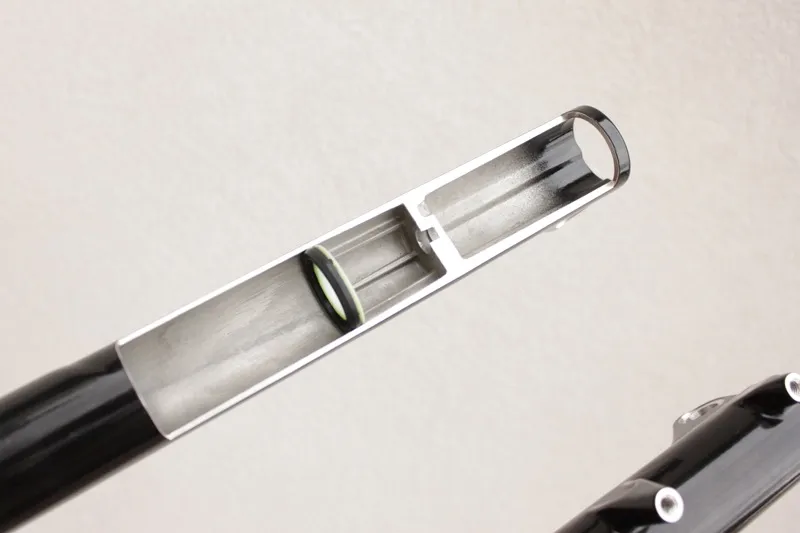
The fluted hollow bottom allows the 29in fork to use the same length upper tubes as the 26in fork
The lowers — for both 2012 SID and Reba — adopt SID’s scalloped Power Buldges and thin-wall 32mm upper tubes. The SID World Cup’s BlackBox carbon crown and steerer, mind you, is only available in the tapered format and won’t be offered on Reba forks. Both new model lines offer the option of 9mm quick-release or 15mm through-axle dropouts for both wheel sizes. The 15mm axle option adds less than 100g. Both forks will be offered with 80-, 100- or 120mm of travel for 26in wheels and 80- or 100mm for 29in wheels.
With so much shared chassis componentry you may be wondering what the difference is between the two platforms. First off, Reba doesn’t have use of the new Motion Control DNA damper; so RLT and RL type dampers only. It also relies on single flow rebound, while the air spring uses the chromed-steel airshaft and standard top cap, versus the new lighter alloy versions. Reba also uses solid bushings, rather than drilled. Externally, SID uses water transfer decals that are clear coated over, while Reba will continue with standard Vinyl on the top of the fork’s finish.
SID 29: A year of development and testing
It took RockShox just over a year to build the new SID 29in fork. Formal development started in February 2010, with the 26in SID 120 chassis. Soon after conceptualizing the fork, the product management team decided to consolidate the SID and Reba chassis. They also worked through outlaying upper tube, damper shaft and lower leg lengths, without changing the characteristics of the air spring’s rate.
In March, RockShox started testing the Revelation World Cup carbon crown-steerer upper tube assemblies with Reba 29in lower legs. It was rough testing to see if the carbon crown would work in the longer-legged fork. “It was more about the stiffness than the strength performance,” said Boobar. “We were trying to evaluate our current carbon design structure.”
Formal chassis design started in March using a 2.4in Specialized Purgatory tire. By the end of July, RockShox sent the design to their factory to start building the tooling to cast the magnesium lowers. “This is when the [product] team is hot and heavy, full-time, doing the design work, doing the FEA work, and on 30 July they released the design for tooling,” said Boobar.
In late August, Subaru-Trek received their first samples of Rebas with Revelation BlackBox carbon crowns to race on for the remainder of the season. On 9 September, RockShox built a production run called ‘L4’ to produce internal ride testing samples. In late October ‘L3’ was run, which served as OE customer ride samples. “These products were built at our factory using our roughed-in tooling and fixturing,” said Boobar.
In early November Subaru-Trek got their first samples of the 2012 Reba RLT. The team rode these forks throughout the winter to confirm and verify the design. They suggested no changes. In April 2011, Specialized received the first 'SID 29' forks outfitted with their Brain damper and the new air spring components.
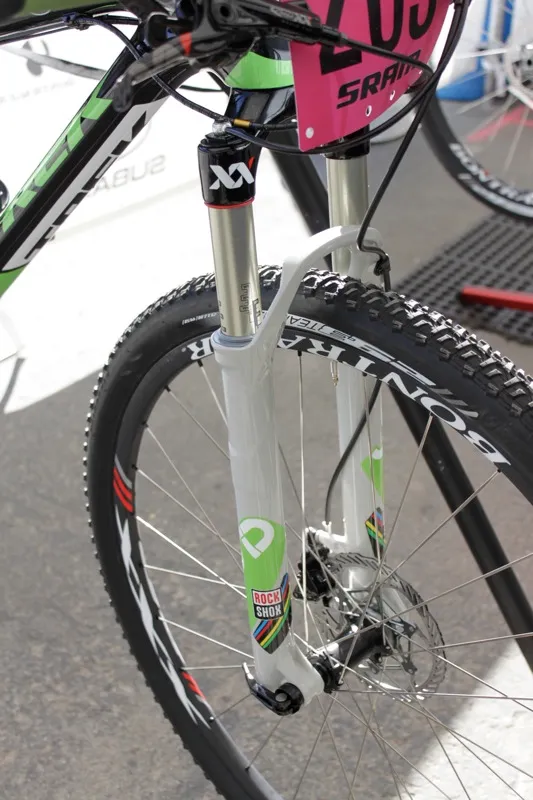
Subaru-Trek was one of the first teams to race — and win — with SID 29 in 2011
On 14 April at the Sea Otter Classic, the Subaru-Trek team and Giant Factory rider Carl Decker took delivery of the first SID 29 XX forks as part of RockShox’s launch of the new model. Later that weekend, Emily Batty (Subaru-Trek) and Specialized’s Todd Wells took wins in their respective cross-country races on their SID 29 forks. In late May, we took delivery of our first SID 29 XX fork; stay tuned for our first ride impressions.
